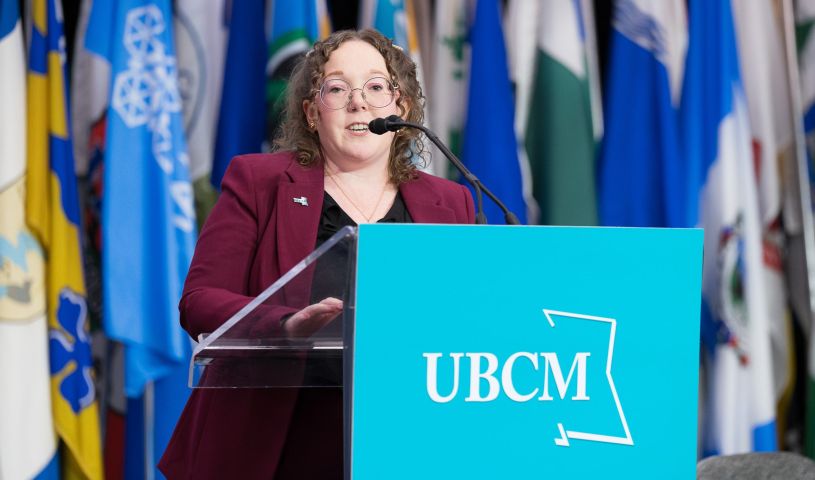Halifax CAO reflects on career change, 25 years of public service
 Halifax CAO Cathie O’Toole is retiring after 25 years in public service, reflecting on her leadership journey, the evolving challenges in municipal governance, and her next chapter at Dalhousie University. Photo: Halifax Regional Municipality
Halifax CAO Cathie O’Toole is retiring after 25 years in public service, reflecting on her leadership journey, the evolving challenges in municipal governance, and her next chapter at Dalhousie University. Photo: Halifax Regional Municipality
After more than two decades of shaping municipal governance in Nova Scotia, Cathie O’Toole is preparing to close the chapter on her public service career.
O’Toole has served as CAO of Halifax Regional Municipality for nearly three years. She announced back in July she will retire this October, marking the end of a 25-year journey that spanned finance, infrastructure, leadership, and emergency management.
“I love local government, and I love public service. When I was younger, I probably had a little bit more resilience, but it has also been the commitment to public service that’s made me stay in local government,” O’Toole said. “It’s the satisfaction of knowing that you are making a difference in your community. And often, it’s not the stuff that anybody sees, it’s the stuff that doesn’t happen. It’s the crisis that’s averted.”
Time to Think About Change
O’Toole said she had been thinking about stepping away since April when she reached her earliest reduced retirement date. But when she took the job as CAO, she envisioned doing three to five years at least.
But then, things changed – in fact, quite a lot changed. With last fall’s municipal election, Halifax gained a new mayor, saw about half of council change, but O’Toole remained committed to seeing them through that transition to help position the municipality for what lay ahead.
Then, around June or July, O’Toole noted “just a lot of things going on” in the world of Nova Scotia municipal government. There have been numerous legislative changes over the last two years, which O’Toole said have affected both the autonomy of municipalities and the role of the CAO specifically.
There has also been ongoing discussion about strong mayor powers and whether that’s going to come or not. That said, Nova Scotia Premier Tim Houston recently said his government will not grant any strong mayor powers in the upcoming legislative session. Still, it was something else that gave O’Toole the opportunity to look at where she was at in her career.
Ultimately, she made the choice that now was the time to try something new.
“I’ve got 25 years in and around local government. I’m proud of what the municipality’s accomplished,” O’Toole said. “But that whole aspect of CAOs being on duty 24-7, the emergency management, the stuff we’ve had to deal with, it just has gotten to a point with me, I feel I’ve achieved what I put in the municipal sector, and I want to move on and do something else.”
Embracing Career Challenge
Looking back, O’Toole said she is proud of the trust placed in her by colleagues and councils. That included her work with Halifax council, her time with Halifax Water, and being tapped by the province or other external organizations from time to time to work on unique files.
She also cited her work on Canada’s first regulated rates for wastewater and stormwater service, and the redesign of a public sector pension plan. O’Toole proudly admits that was a challenge she enjoyed.
Early in her career, O’Toole said she was focused on finance. By the midpoint of her career, the focus shifted more to infrastructure and growth planning. But by the time the later stages of her career came along, it really became about leadership and people.
Her reputation as a “change agent” is one she celebrates.
“Somebody who’s open to change and can bring together diverse groups of stakeholders and effect change. That would be something I’m proud of,” O’Toole said. “I think those skills came to play a few times.”
State of Local Government
Despite her accomplishments, O’Toole expressed concern about the current state of local government. In fact, she said the current state of local government is worse now than ever.
This can, certainly in some part, be blamed on a decline in stability around public discourse that’s impacting mayor and council as well as CAOs. She pointed to the shrinking tenure of CAOs as a symptom of broader instability. While CAOs once held their roles for decades, O’Toole said she has seen reports stating the typical tenure today is “around 2.8 to three years.”
O’Toole said she believes the CAO profession is misunderstood in general. “It’s also not as well promoted as it could be. In this light, she is excited about the new CAO toolkit that the Canadian Association of Municipal Administrators just launched – “I think that’s going to be a very useful document.”
All that said, affordability pressures and limited revenue tools have compounded the challenges.
“The concerns broadly about affordability place more pressure on the local level of government than it does on provincial or federal government,” O’Toole said, “You can’t stop providing policing. You can’t stop providing fire service, wastewater treatment, water treatment. A lot of the things that municipalities do, you have to do and there’s not a lot of options. It’s a difficult financial space.”
Commitment to Public Service
Asked to define the role of a CAO, O’Toole offered a vivid analogy. Being a CAO is like being an air traffic controller – there are the planned flights that must be dealt with, but then there are the unplanned emergencies, and the many other things go on within the terminal or the neighbouring airspace every day.
It is a high-pressure job that demands constant vigilance and resilience.
Despite the challenges, O’Toole remained committed to public service throughout her career.
Her journey began with a job at the provincial government, working with the Department of Housing and Municipal Affairs. She admits to not fully understanding what services municipalities provide versus the province or federal government back then. It’s something, she acknowledges, that a lot of Canadians struggle with even today.
But once she entered local government, she never looked back.
“I frankly enjoyed local government more. You are closer to the issues; you’re closer to the residents, the customers, the constituents,” O’Toole said. “I could go home feeling a little bit more satisfaction. It’s a little bit easier to impact people’s daily lives.”
A New Chapter Begins
O’Toole’s next move is not a retreat from responsibility, but a pivot to a new kind of leadership. She will be joining Dalhousie University as Vice President of Finance and Administration – a role she describes as “running the non-academic side of the university.”
As a Dalhousie University graduate, O’Toole said she is excited for the move. Dalhousie, she added, is a vital contributor to the vibrancy of both Halifax and Nova Scotia.
When she saw the position came up, O’Toole looked at the posting and decided she had already done “pretty much everything in that portfolio.”
In addition, she has a lot of respect for the leadership at the university and believes the institution aligns well with her values.
“The skillset required, it’s not unlike running a small city,” O’Toole said. “When you think about dealing with university campus, the buildings, the parking, the residences, the food services, the finances, it’s directly transferable skills.”
Finding Balance in Nature
Her position at Dalhousie, O’Toole speculates, will probably allow “a little bit better work-life balance” than being the Halifax CAO. That will be important, she adds, because finding work-life balance hasn’t always come easily to her.
Still, after years of high-stakes decision making, O’Toole said she learned how to protect her mental health.
Over the years, those “tricks of the trade” evolved from active hobbies like softball and golf to quieter, more introspective routines. She also enjoys getting her hands a little dirty.
“One of the best decisions my husband and I ever made was to purchase an old camp, basically an old cottage, and try to rebuild it and spend time in nature,” she said. “A nice day for me is a quiet day walking through a trail in the woods.” MW
✯ Municipal World Executive and Essentials Plus Members: You might also be interested in Dr. Kate Graham and Jesse Helmer’s article: Turnover at the top: CAOs and council dynamics.
Sean Meyer is digital content editor for Municipal World.
Related resource materials:
- Retiring Yellowknife city manager eager for new opportunities
- Retiring city manager hopeful for London’s future
- York Region CAO reflects on public service, new opportunities



